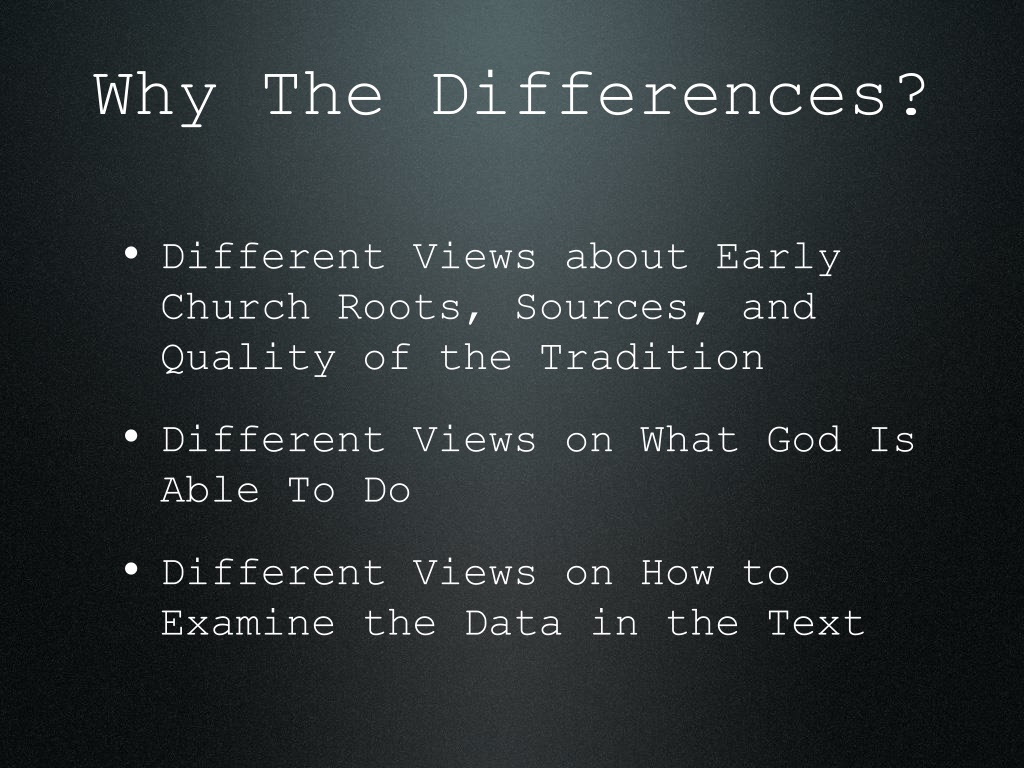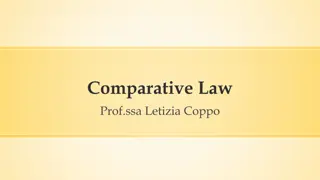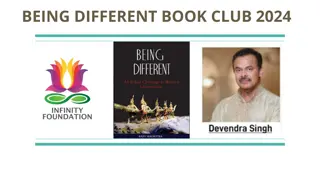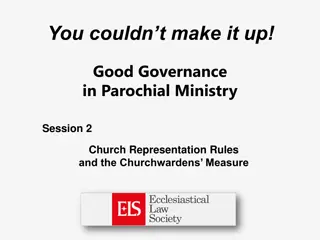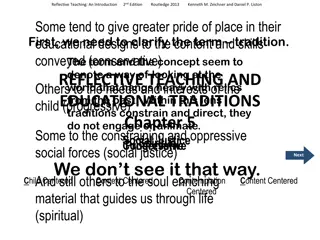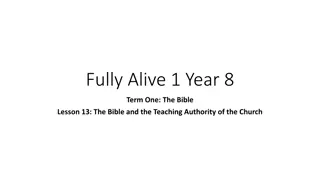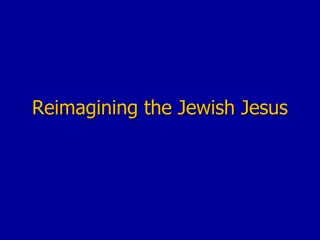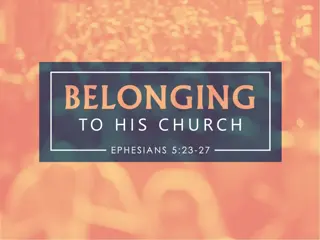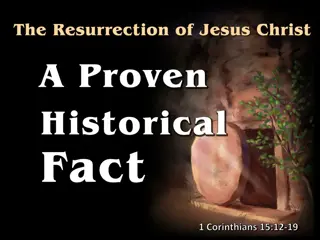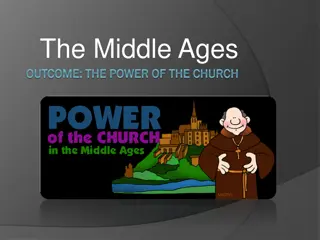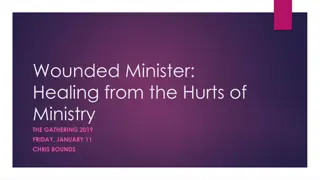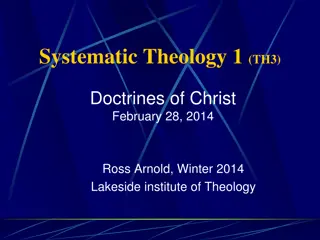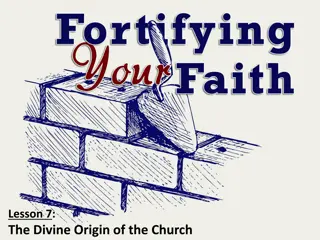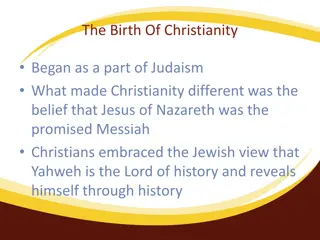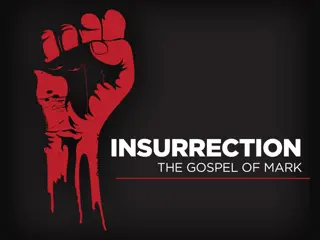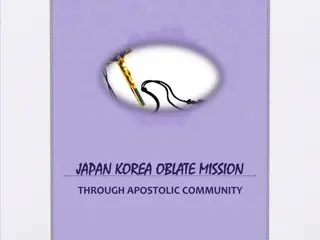Understanding Diverse Perspectives on Early Church Traditions and Historical Jesus
Exploring different viewpoints on early church roots, sources, and the quality of tradition, as well as varying beliefs on God's abilities and approaches to analyzing textual data. Delve into the criteria for evaluating historical Jesus materials and considerations of authorship and orality in tradition assessment, with intriguing references to Josephus' writings on Jesus and the burden of proof in historical analysis.
Download Presentation

Please find below an Image/Link to download the presentation.
The content on the website is provided AS IS for your information and personal use only. It may not be sold, licensed, or shared on other websites without obtaining consent from the author. Download presentation by click this link. If you encounter any issues during the download, it is possible that the publisher has removed the file from their server.
E N D
Presentation Transcript
Why The Differences? Different Views about Early Church Roots, Sources, and Quality of the Tradition Different Views on What God Is Able To Do Different Views on How to Examine the Data in the Text
Jesus by the Rules: How Does Historical Jesus Stuff Work? Structure and Approach: What can be corroborated. Micro and Macro work. The (Key) Rules: Multiple Attestation: Multiple Sources (not uses) or forms Dissimilarity: not (quite) like Judaism or Early church Embarrassment: Early church would not create this Cultural Plausibility: Does it fit of Effect: Have to be able to explain the crucifixion Inherent Ambiguity: created saying would be more direct Coherence: What fits with what gets through
Assessing the Tradition Issues Tied to Orality (What Kind?) and to Authorship Uncontrolled, Informal//Controlled, Formal//Informal, Controlled Variation and Gist Issues tied to Authorship An Example on Authorship: Mark
Josephus on Jesus (Ant 18.63-64) Now, there was about this time Jesus, a wise man, [if it be lawful to call him a man], for he was a doer of wonderful works a teacher of such men as receive the truth with pleasure. He drew over to him both many of the Jews, and many of the Gentiles. [He was [the] Christ;]
Josephus, cont. when Pilate, at the suggestion of the principal men amongst us, had condemned him to the cross, those that loved him at the first did not forsake him, [for he appeared to them alive again the third day, as the divine prophets had foretold these things concerning him;] and the tribe of Christians, so named from him, are not extinct at this day. and and ten thousand other wonderful
Burden of Proof & Conclusions Burden Is on the Casemaker Understand the Rules and How They Are Played Appreciate How Tradition Is Handled
John the Baptist Multiply attested Places ministry in a Second Temple Jewish context Authenticity of Jesus baptism points to an apocalyptic dimension to Jesus message, not a mere sage prophet.
Sabbath Controversy Multiple Attestation: Both activity and miracle on the Sabbath (Mark 3:1- 6; Luke 13). Jewish Marker, Jubilees; Mishnah, Shabbat 7.2: A. The generative categories of acts of labor [prohibited on the Sabbath] are forty less one: (1) he who sows, (2) ploughs, (3) reaps, (4) binds sheaves, (5) threshes, (6) winnows, (7) selects [fit from unfit produce or crops], (8) grinds, (9) sifts, (10) kneads, (11) bakes; (12) he who shears wool, (13) washes it, (14) beats it, (15) dyes it; (16) spins, (17) weaves, (18) makes two loops, (19) weaves two threads, (20) separates two threads; (21) ties, (22) unties, (23) sews two stitches, (24) tears in order to sew two stitches; (25) he who traps a deer, (26) slaughters it, (27) flays it, (28) salts it, (29) cures its hide, (30) scrapes it, and (31) cuts it up; (32) he who writes two letters, (33) erases two letters in order to write two letters; (34) he who builds, (35) tears down; (36) he who puts out a fire, (37) kindles a fire; (38) he who hits with a hammer; (39) he who transports an object from one domain to another lo, these are the forty generative acts of labor less one. Problem of Authority: over the Sabbath,
Healing of the Paralytic Miracle and Explanation Authority to Forgive Sin (Jewish background- No one forgives but God) Shows How Jesus Often Showed Who He Was Versus Saying Who He Was
Peter at Caesarea Philippi Embarrassment with following scene. Cultural setting in a non-Jewish setting and ambiguity of the confession (the silence). Debate: Messianic Secret Caesarea Philippi Jesus more than a prophet
Other Defining Events Table Fellowship- Reaching out to Others Naming of the Twelve: A New Work in Time of Fulfillment Exorcisms: The Real Battle
Messiah Cleanses Jerusalem Psalms of Solomon 17: (26) And he shall gather together a holy people, whom he shall lead in righteousness, And he shall judge the tribes of the people that has been sanctified by the Lord his God. And he shall not suffer unrighteousness to lodge any more in their midst. Nor shall there dwell with them any man that knows wickedness, For he shall know them, that they are all sons of their God. (28) And he shall divide them according to their tribes upon the land, And neither sojourner nor alien shall sojourn with them any more.(29) He shall judge peoples and nations in the wisdom of his righteousness. Selah. (30) And he shall have the heathen nations to serve him under his yoke; And he shall glorify the Lord in a place to be seen of (?) all the earth; And he shall purge Jerusalem, making it holy as of old: (31) So that nations shall come from the ends of the earth to see his glory. Bringing as gifts her
Jewish Examination Cultural Suitability: Blasphemy vs Exaltation Potential Witnesses and the public dispute in Jerusalem over decades (Ant 20.200). Texts and Issue: Exagoge of Ezekiel 68-82; 1 Enoch Versus 3 Enoch; b Hag 14a-b; b Sanh 38b Jesus consciously took on his death and set the table for how to read subsequent events.
Crucifixion Effect, Cultural Plausibility Scene tied to mocking, not likely to be made up (embarrassment, multiple attestation)- why chronicle official disrespect for Jesus and portray Roman justice as so arbitrary?; Multiply attested (Josephus, Ant 18.63-64- leaders plus Pilate) The Titulus: Jesus, King of the Jews The Crime: Sedition The Act: Independent Political Authority Pilate s assignment in Judea: Collect taxes, keep the peace, guard Caesar s interests, and select the High Priest each
Resurrection Multiply attested (gospels, epistles, implied Pliny) Event not created: Women as first witnesses [See m. Shebuot [ Oaths ] 4.1 an oath of testimony applies to men but not to women ; m. Rosh haShanah 1.8 any evidence a woman is not eligible to bring ; b. Baba Qamma 88a a woman ... is disqualified from giving evidence. ]; Burial practices are accurate [m Sanh 6:5-6-And not this only, but whoever allows his deceased to stay unburied overnight transgresses a negative commandment. But [if] one kept [a corpse] overnight for its own honor, [for example,] to bring a bier for it and shrouds, he does not transgress on its account.And they did not bury [the felon] in the burial grounds of his ancestors.]; third day resurrection not necessary on Jewish precedent [resurrection at the end]; reaction to the women is unflattering [embarrassment]; why no detailed appearances to Peter or James if creation
Summary Events form a coherent link and set of themes about the new era and Jesus central role as the figure at the hub of activity for God s acts and promises (a depth coherence) Christ - the anointed central figure of God s promise Supports Jesus self-understanding of his death and vindication Issue of vindication- the right to share the glory and presence of God
